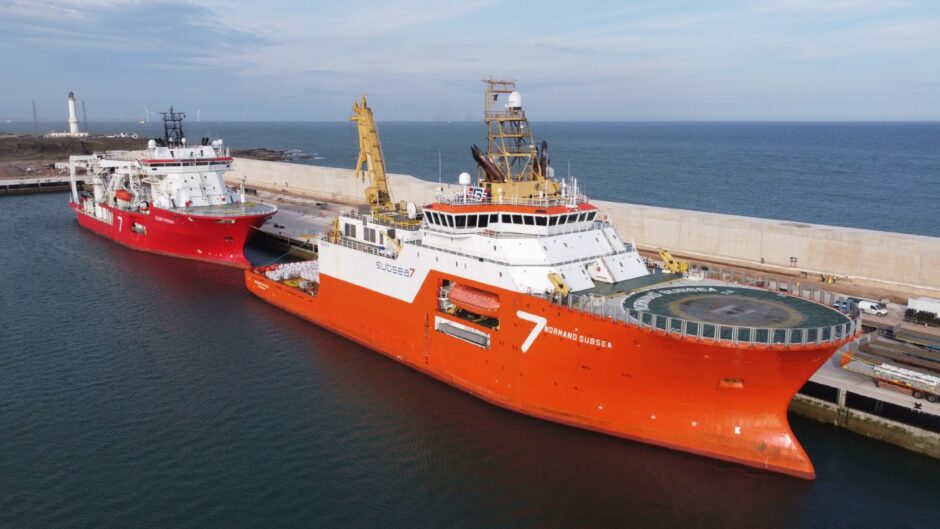
The chief executive of Subsea 7 (OSLO: SUBC) tempered his excitement as the engineering, construction and services group posted its latest results.
John Evans described the Luxembourg-headquartered company’s second quarter financials as “satisfactory”, with praise for the “strong” outcome in renewables.
In the first six months of the year Subsea 7 made pre-tax profits of $25.3 million, a notable reduction on the $30.6m reported for H1 2022.
Revenue between January and June was up year-on-year though, from $2.4 billion to $2.8bn, something the company expects to continue in the second half of 2023.
Second quarter adjusted earnings before interest, tax, depreciation and amortisation (EBITDA), Subsea 7’s preferred financial yardstick, was $162m, up 11% from Q1.
The group has also got its “renewables business unit back on track”, again with an adjusted EBITDA margin of 11%.
Subsea 7’s “order intake remains strong at $2.2bn”, while its backlog is over $10bn, of which $3.0bn will be executed in 2023 and $4.3bn in 2024.
Operational highlights across the quarter included the completion of cable laying activities at Seagreen, Scotland’s largest offshore wind farm, as well as “good progress” at the Dogger Bank development.
But there was no mention of Subsea 7’s failed attempt to takeover Norwegian subsea services firm DOF Group (OSLO: DOF).
The company announced in June it had temporarily paused its pursuit of DOF after the latter’s board failed to engage in “constructive dialogue”.
Mr Evans said: “Subsea7 delivered satisfactory financial results for the second quarter of 2023 reflecting a good operational performance in Subsea and Conventional and a strong result in Renewables. Continued positive momentum in new orders saw over $2 billion new work booked during the quarter, including notable awards of the Sakarya Phase 2A integrated subsea development in Türkiye, and an integrated monopile and cable installation contract for the East Anglia THREE wind development in the UK.
“Our book-to-bill was 1.4 times and the backlog grew to $10.4 billion. The Group is on track to meet Adjusted EBITDA expectations for the full year 2023, and the strong backlog, combined with the current positive dynamics in project tendering, gives us confidence that the Group Adjusted EBITDA margin will return to a range of 15-20% over the coming four years.”
Recommended for you

